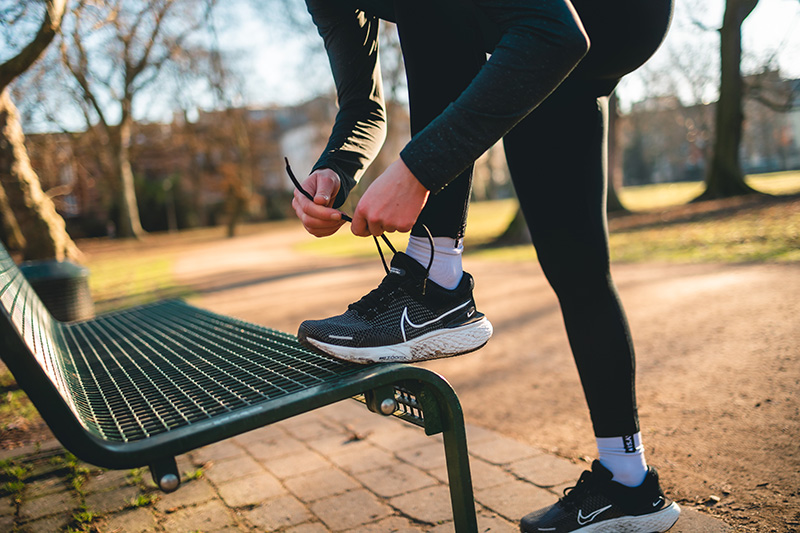Running equipment - focus on running shoes
Jogging Equipment - Differences in Running Shoes
| Shoe type | Properties | Suitable for |
| Neutral shoes | Running shoes without stabilising elements | Suitable for neutral running attachment |
| Stability shoes | Running shoes with support element on the inside | Suitable for runners with overpronation; corrects overpronation (foot tilts too much inwards when touching down) |
| Carbon shoes | Current trend: stiff carbon plate returns energy to runner:in with every step, is supposed to reduce muscular effort and improve running economy | Suitable for competitions, increase positive effects for forefoot and midfoot runners |
- Cushioning: As a beginner, you should always start with a very well cushioned shoe. Otherwise, the amount of cushioning depends on your running style, weight and preferences.
- Weight: The weight of your running shoes depends on your running style, pronation, body weight and training goal. If you choose shoes with more cushioning, they are usually heavier. If you run more often and train for competitions, you can choose running shoes with different weights. Use the lighter ones for short, fast training sessions and competitions. The better cushioned and heavier shoes are used for long endurance runs.
Laufequipment - Praktische Tipps zum Laufschuhkauf
- If you are a beginner runner, you should buy your running shoes in a specialist shop with personal advice.
- It is best to try on running shoes in the late afternoon or evening. This is because feet expand during the course of the day.
- It's best to bring old running shoes, as the wear and tear on the soles can provide valuable information about your running style.
- To try them on, wear exactly the same running socks that you will wear later in training or competition.
- Make sure that your running shoes do not pinch. The distance from the big toe to the tip of the shoe should be at least one thumb. As a rule of thumb, running shoes are always one size bigger than your sneakers.
- The width of the shoe should be chosen so that your forefoot does not "swim" in the shoe, but the shoe does not press laterally on the transverse arch or above the base of the toe. With moderate lacing, the shoe should fit tightly at the instep.
- When rolling, the heel cap should not rub against your Achilles tendon.
- It is best to run several hundred metres in your new running shoes before you buy them. This is usually possible in a good running shop. Ask beforehand!
- Important: If you wear insoles, you should of course bring them to the fitting!




.png)










